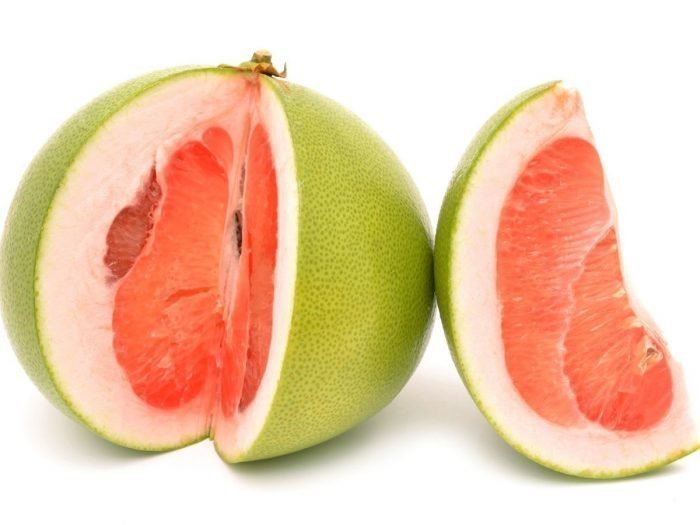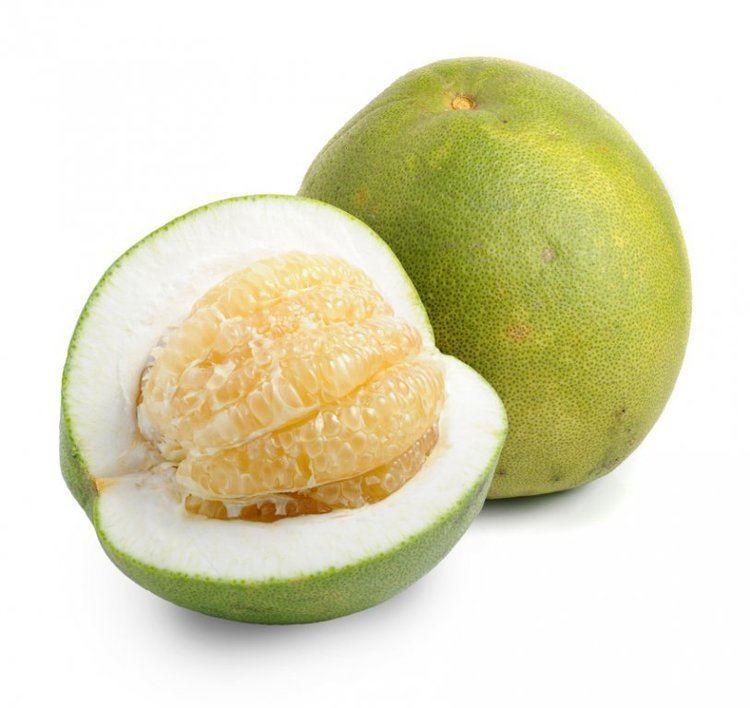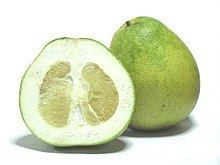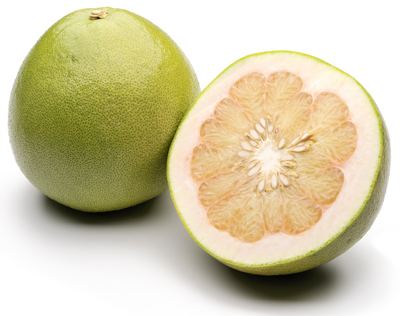Kingdom Plantae Family Rutaceae Scientific name Citrus maxima Rank Species | Order Sapindales Genus Citrus Higher classification Citrus | |
 | ||
Similar Oroblanco, Tangerine, Tangelo, Orange, Fruit | ||
The pomelo tree and fruit citrus maxima hd video
Citrus maxima (or Citrus grandis), (Common names: pomelo, pomello, pummelo, pommelo, pamplemousse, jabong (Hawaii), batabi or jambura (Bengali), zambura (Sylheti), or shaddock,) is a natural (non-hybrid) citrus fruit, similar in appearance to a large grapefruit, native to South and Southeast Asia.
Contents
- The pomelo tree and fruit citrus maxima hd video
- Etymology
- Description and uses
- Drug interactions
- Non hybrid pomelos
- Possible non hybrid pomelos
- Hybrids
- References

The pomelo is one of the four original citrus species from which the rest of cultivated citrus hybridized.
Etymology

Citrus maxima was originally called "shaddock" in English, after the captain of an East India Company ship who introduced it to Jamaica in 1696. The word "pomelo" has become the more common name, although "pomelo" has historically been used for grapefruit. (The 1973 printing of the American Heritage Dictionary, for example, gives grapefruit as the only meaning of "pomelo".)

The etymology of the word "pomelo" is complex. In the Tamil language it is called "pampa limāsu", which means big citrus. The name was adopted by the Portuguese as "pomposos limões" and then by the Dutch as "pompelmoes". The name can be found with some deviations in many European languages, for example German (Pampelmuse), Latvian (Pampelmūze), Ido (Pompelmuso), whereas some other languages use "pomelo" (Turkish, Norwegian, Polish).

This fruit is often called by "shedock" by English authors from the name of a British captain. However, another theory proposed that "pomelo" is an alteration of a compound of English names pome ("apple") + melon.

Citrus maxima is native to Southeast Asia where it is known under a wide variety of names. In large parts of South East Asia, it is a popular dessert, often eaten raw sprinkled with, or dipped in, a salt mixture. It is also eaten in salads and drinks. It is called in Maithili- टाभ नेबो(taabh nebo) that makes special अर्घ(argh-an offering plate with distinct farm fruit ,tubers and roots) in छठ पूजा (Chhathh Pooja - a two days fast observed and end with worshipping the setting Sun and rising Sun God).
Description and uses

The fruit is usually pale green to yellow when ripe, with sweet white (or, more rarely, pink or red) flesh, and a very thick albedo (rind pith). It is a large citrus fruit, 15–25 centimetres (5.9–9.8 in) in diameter, usually weighing 1–2 kilograms (2.2–4.4 lb). Leaf petioles are distinctly winged.
The fruit tastes like a sweet, mild grapefruit (which is itself believed to be a hybrid of Citrus maxima and the orange), though the typical pomelo is much larger than the grapefruit, and also has a much thicker rind. It has none, or very little, of the common grapefruit's bitterness, but the enveloping membranous material around the segments is bitter, considered inedible, and thus is usually discarded.
The peel is sometimes used to make marmalade, can be candied, and is sometimes dipped in chocolate. In Brazil, the thick skin is often used for making a sweet conserve, while the spongy pith of the rind is discarded. In Sri Lanka, it is often eaten as a dessert, either raw or sprinkled with sugar. Occasionally some Asian fat-heavy dishes use sliced pre-soaked pith to absorb the sauce and fat for eating.
Citrus maxima is usually grafted onto other citrus rootstocks but can be grown from seed, provided the seeds are not allowed to dry out before planting.
The fruit is said to have been introduced to Japan by a Cantonese captain in the An'ei era (1772–1781). There are two varieties: a sweet kind with white flesh and a sour kind with pinkish flesh, the latter more likely to be used as an altar decoration than actually eaten. Pomelos are often eaten in Asia during the mid-autumn festival or mooncake festival.
It is one of the ingredients of "Forbidden Fruit", a liqueur dating back to the early 20th century that also contains honey and brandy. This liqueur is most famously used in the Dorchester cocktail.
Drug interactions
Some medicines may interact dangerously with pomelos and some pomelo hybrids, including grapefruit, some limes, and some oranges.
Non-hybrid pomelos
Possible non-hybrid pomelos
Hybrids
The pomelo is one of the four original citrus species (the others being citron, mandarin, and papeda), from which the rest of cultivated citrus hybridized. In particular, the common orange and the grapefruit are assumed to be natural occurring hybrids between the pomelo and the mandarin, with the pomelo providing the bigger size and greater firmness.
The pomelo is also employed today in artificial breeding programs:
